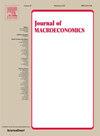货币政策委员会异质性在欧元区财政政策中的作用
IF 1.5
3区 经济学
Q3 ECONOMICS
引用次数: 0
摘要
我们评估了欧元区边际消费倾向(MPC)的异质性对财政政策的影响。延伸Jappelli和Pistaferri(2014)的开创性工作,我们记录了平均MPC为0.46,在国家,家庭特征和财务状况(包括手头现金以及流动和非流动财富)之间存在显着差异。平均MPC从荷兰的0.33到立陶宛的0.57不等。手头现金较少的家庭平均mpc较高。政策实验表明,与假设统一的MPC相比,考虑MPC异质性可以提高财政政策刺激GDP增长的有效性。我们提供了一个与大流行相关的例子:针对MPCs平均较高的接触密集型部门的财政刺激计划,可使总消费增加1.70%,而针对接触密集程度较低的部门的相同计划,仅可使消费增加1.17%。最后,我们提供了支持异质代理新凯恩斯模型校准的时刻,例如欧元区家庭资产与gdp的比率,该比率为689%。本文章由计算机程序翻译,如有差异,请以英文原文为准。
The role of MPC heterogeneity for fiscal policy in the euro area
We assess the implications of heterogeneity in the marginal propensity to consume (MPC) for fiscal policy in the euro area. Extending the seminal work of Jappelli and Pistaferri (2014), we document an average MPC of 0.46, with significant variation across countries, household characteristics, and financial positions, including cash-on-hand as well as liquid and illiquid wealth. The mean MPC ranges from 0.33 in the Netherlands to 0.57 in Lithuania. Households with lower cash-on-hand exhibit higher MPCs on average. Policy experiments demonstrate that accounting for MPC heterogeneity enhances the effectiveness of fiscal policy in stimulating GDP growth compared with assuming uniform MPCs. We provide a pandemic-related example: a fiscal stimulus programme targeted at a contact-intensive sector with higher MPCs on average, which increases aggregate consumption by 1.70%, while the same programme targeted at a less contact-intensive sector increases consumption by only 1.17%. Finally, we provide moments to support the calibration of Heterogeneous Agent New Keynesian models such as the ratio of household assets-to-GDP in the euro area, which stands at 689%.
求助全文
通过发布文献求助,成功后即可免费获取论文全文。
去求助
来源期刊

Journal of Macroeconomics
ECONOMICS-
CiteScore
2.50
自引率
7.10%
发文量
53
审稿时长
76 days
期刊介绍:
Since its inception in 1979, the Journal of Macroeconomics has published theoretical and empirical articles that span the entire range of macroeconomics and monetary economics. More specifically, the editors encourage the submission of high quality papers that are concerned with the theoretical or empirical aspects of the following broadly defined topics: economic growth, economic fluctuations, the effects of monetary and fiscal policy, the political aspects of macroeconomics, exchange rate determination and other elements of open economy macroeconomics, the macroeconomics of income inequality, and macroeconomic forecasting.
 求助内容:
求助内容: 应助结果提醒方式:
应助结果提醒方式:


